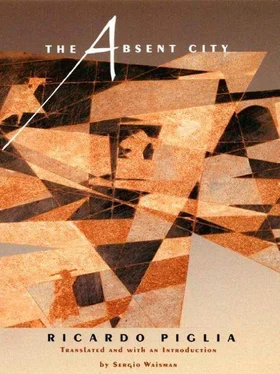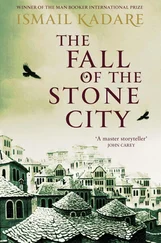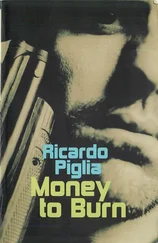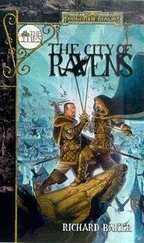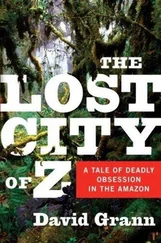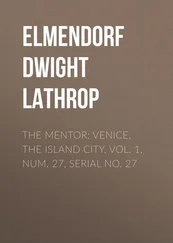“Kiss me, today you and I were united in matrimony. I am Venus, and you have given me the ring of love.”
The first time he told the story, the girl seemed to fall asleep. There was a breeze from the garden at the end of the patio. There were no visible changes, at night she dragged herself into her room and curled up in the darkness with her normal clucking. The next day, at the same time, her father sat her in the same place and told her another version of the story. The first important variation had appeared about twenty years later, in a German compilation from the mid-twelfth century titled Kaiserchronik . In this version, the statue on whose finger the young man places the ring is not Venus, but the Virgin Mary. When he tries to unite with his bride, the Mother of God comes between the couple to chastise him, which incites a mystical passion in the young man. After leaving his wife, the young man becomes a priest and devotes the rest of his life to the service of Our Lady. An anonymous twelfth-century painting depicts the Virgin Mary with a ring on her left ring finger and an enigmatic smile on her lips.
Every day, in the early evening, the father would tell her the same story in its multiple variations. The clucking girl was an anti-Scheherazade, she heard the story of the ring told a thousand and one times at night by her father. Within a year the girl is already smiling, because she knows how the story ends. Sometimes she looks down at her hands and moves her fingers, as if she were the statue. She looks up at the garden and, for the first time, gives her version of the events in a soft whisper. “Mouvo looked at the night. Where his face had been another appeared, Kenya’s. Again the strange laugh. All of a sudden Mouvo was in a corner of the house and Kenya in the garden and the sensorial circles of the ring were very sad,” she said. From that point on, with the repertory of words she had learned and with the circular structure of the story, she began to build a language, an uninterrupted series of phrases that allowed her to communicate with her father. In the following months she was the one who told the story, every evening, in the hall facing the patio in the back of the house. She reached a point where she was able to tell, word for word, the version by Henry James — perhaps because his story, “The Last of the Valerii,” was the last in the series. (The action has shifted to Rome in the time of the Risorgimento, where a young woman, who has inherited a fortune, in one of those typically Jamesian moves, marries an Italian noble from a distinguished, but impoverished, lineage. One afternoon, a group of laborers working at a dig in the gardens of the villa discover a statue of Juno. Signor Conte begins to feel a strange fascination with that masterpiece from the best period of Greek sculpture. He moves the statue to an abandoned greenhouse and hides it mistrustfully from anyone’s view. In the days that follow, he transfers a large part of the passion he feels for his beautiful wife to the marble statue, and spends more and more of his time in the glass structure. At the end, the Contessa, in order to free her husband from the spell, tears the ring off of the goddess’s ring finger and buries it at the far end of the gardens. Her life becomes happy once again.) A gentle drizzle was falling in the patio and the father was rocking in his chair. That afternoon the girl left the story for the first time, she left the closed circle of the story like someone walking through a door, and asked her father to buy her a gold ring ( anello ). There she was, singing softly, clucking, a sad music machine. She was sixteen years old, a pale dreamer, like a Greek statue. As steadfast as an angel.
Junior saw the ring and the succession of the different versions of the story of the ring. An engraving by Dürer (“Melancholy,” 1497- 98) hung on the wall to the left. Passion, symbolized by the figure of Venus, with a ring in her left hand and a stone sphere at her feet. The story was the tale of the power of stories, the song of the girl looking for life, the music of words repeated to form a closed circle of gold. Off to a side there was a copy of The Anatomy of Melancholy, with notes and drawings written inside. Burton had also told the story of the ring in order to illustrate the power of love. The girl lives again thanks to her father’s stories. To narrate was to give life to a statue, to give life to someone who was afraid of living. One of the glass cabinets contained an original copy of the first myth. “He who has lost his wife works relentlessly to build a statue, thinking about her all the time. To live alone or to build the lost woman for oneself. Passion allows the man in love to opt for the latter dream. The Gesta Romanorum (the most popular storybook of the Middle Ages) tells us that Virgil, who considered himself a magician (Story LVII), used to sculpt magic statues to preserve the souls of his dead friends. The ability to give life to an inanimate object is a faculty associated with the idea of the thaumaturge and the powers of a sorcerer. In Egyptian, the word ‘sculptor’ literally means ‘he who keeps life.’ In the ancient burial rites it was believed that the soul of the deceased traveled to a statue of his body, and a ceremony was held to celebrate the transition from body to statue.” Junior recalled the photograph of Elena, the young woman with the turtleneck sweater and the plaid skirt, smiling at the invisible light. A photograph was also a mirror in which to dream a lost woman. There was an enlarged reproduction of the same picture of Elena on the wall at the far end of the room. He saw Macedonio’s manuscripts behind several glass panels. “To escape toward the indefinite spaces of future forms. The possible is what spreads forth into existence. That which can be imagined occurs and goes on to become a part of reality.” Macedonio was not trying to build a replica of man, but rather a machine that could produce replicas. His goal was to nullify death and construct a virtual world. “The country-city, with a million small farms and ten thousand factories,” Junior read, “completely exempt from the horror of the word ‘rent,’ would have the advantages presented in the following list: Military unattackability. Unattackability via siege or blockade. No firemen. No policemen. A despairing scarcity of diseases. A reduction of more than 40 percent of all speculative, unproductive, barren and aleatory commercial exchanges.” Junior looked at the end of the letter. “The war is coming to an end. All that will be left for us is the dark overbearing plans of the United States, which wants to strike Spain and seize power from her to more easily capture Spanish America. The islands have been occupied, the lab must be saved. Very truly yours, Macedonio.” He looked at the signature, at that frail and immortal handwriting, and then walked around the hall, keeping his distance from the machine. It was smooth and slender and seemed to have a pulsing intermittent light. It is only reading me, Junior thought. There are others, in other isolated galleries, reliving their own memories. There was no one else in the room. He thought he saw a flashlight shining on the tiles of the floor, coming toward him from the end of the hallway. As if someone had gotten off a train in a lost station in the middle of the night, Junior thought, and was now slicing through a field, the flashlight shining on the grass. Far off, in what seemed to be the haze of dawn, the Korean appeared, walking in a dream. He was climbing down the ramp that led to the basement and the lower rooms of the Museum with difficulty, dragging his left leg. He looked like a jockey with frightened eyes. It’s Fuyita, Junior thought. He was wearing a black tie and a strip of black silk on the sleeve of his coat indicating he was in mourning. Junior thought of the woman locked in the room of the Majestic Hotel. The men barely acknowledged each other, then Fuyita walked down the corridor and Junior followed him.
Читать дальше
